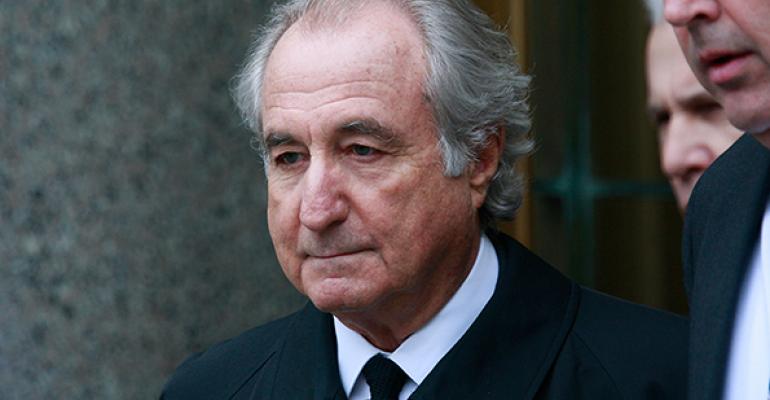(Bloomberg) -- More than a thousand former Bernard Madoff customers were dealt a blow in their fight to keep $875 million in fake profit from the con man’s Ponzi scheme out of the hands of a trustee unwinding his firm.
U.S. Bankruptcy Judge Stuart Bernstein in New York said this week that Andrew H. Cohen, a former trader in Madoff’s market-making business, should return $1.14 million he withdrew from his personal account in Madoff’s bogus investment advisory unit in the two years before the fraud collapsed.
The victory for trustee Irving Picard, a lawyer at Baker & Hostetler LLP in New York, should set a precedent for the 394 remaining cases against more than 1,400 defendants who fall into the same category as Cohen, his spokeswoman Amanda Remus said in a statement.
Resolving the batch of cases would give a sizable boost to Picard, who has already recovered more than $11.1 billion for victims through hundreds of lawsuits against Madoff’s biggest customers, banks and offshore feeder funds. The trustee’s recoveries amount to nearly 64 percent of the $17.5 billion of lost principal. Most recently the trustee paid $1.2 billion in December to victims.
Madoff pleaded guilty to fraud charges in 2009 and is serving a 150-year sentence. A jury in 2014 convicted five of his top aides for their roles in the swindle, a verdict upheld by a federal appeals court on April 20.
Net Losers
Picard was hired by the Securities Investor Protection Corp., an industry-financed group that seeks to make investors whole after frauds. His payouts have been made to "net losers" -- those who withdrew less from Madoff’s firm than they deposited. The distinction between the two types of victims has been at the center of the biggest court battles stemming from the eight-year-old liquidation, with lawyers for hundreds of victims arguing -- unsuccessfully -- that they should be allowed to keep fake profit.
Cohen and the other customers in his category are “good faith” victims who didn’t know about the fraud but who withdrew more money than they deposited over a two-year period before Madoff’s arrest. Picard previously settled 384 "good faith" cases, and dropped 217 others as part of his hardship program that helped victims made destitute by the scam, according to Remus. U.S. bankruptcy law limits such claw-back suits to a two-year period.
Gregory Goett, Cohen’s lawyer, didn’t immediately return a call for comment.
Paid Taxes
Cohen had argued for years against returning the money on the grounds that he received the cash "for value" on a debt Madoff owed -- a defense pulled from provisions of the U.S. Bankruptcy Code. Cohen also argued he was entitled to recover $773,869 in taxes he paid on the fake profit. Those arguments were ultimately shot down by Bernstein in post-trial findings on April 25, in which the judge recommended that the district court enter a judgment in Picard’s favor.
"Even if the defendants had claims against BLMIS under state or federal law, the transfers from BLMIS exceeding the return of defendants’ principal were not made ‘for value,”’ Bernstein said.
Cohen worked for Madoff’s company as a trader on its market-making desk from 1991 to 2000, and had an investment advisory account starting in 1996, Picard said. Over the years, Cohen deposited $2.92 million into his account and withdrew $4.06 million, a windfall made possible through Madoff’s returns on fake securities transactions, according to the trustee.
The case is Securities Investor Protection Corp. v Andrew H. Cohen, 08-01789, U.S. Bankruptcy Court for the Southern District of New York (Manhattan).
To contact the reporter on this story: Erik Larson in New York at [email protected] To contact the editors responsible for this story: David Glovin at [email protected] Joe Schneider

